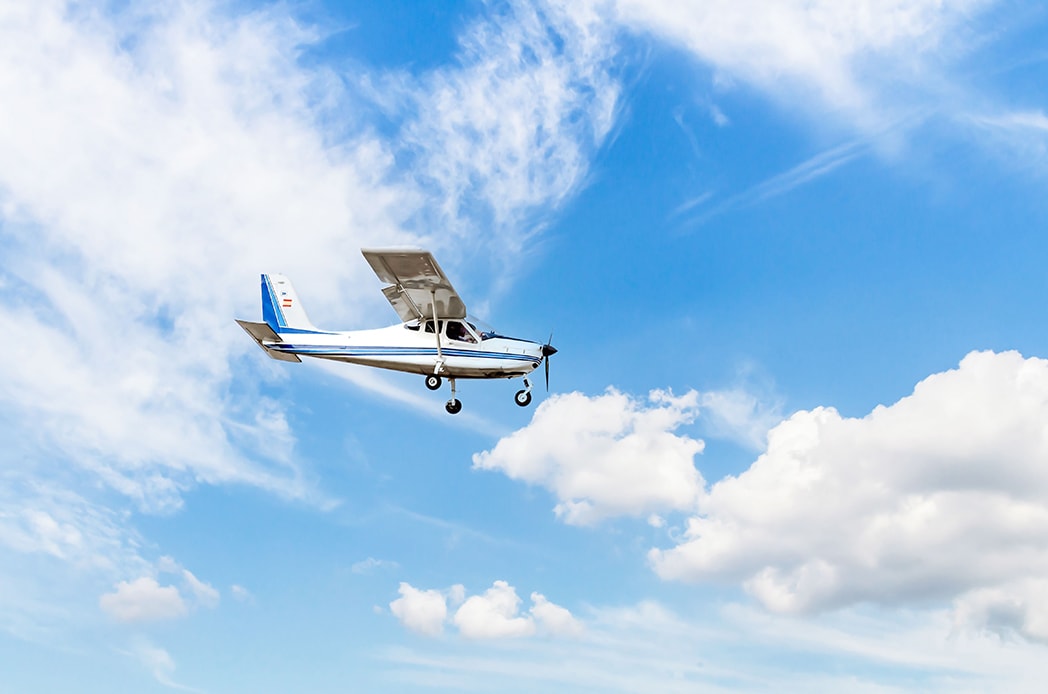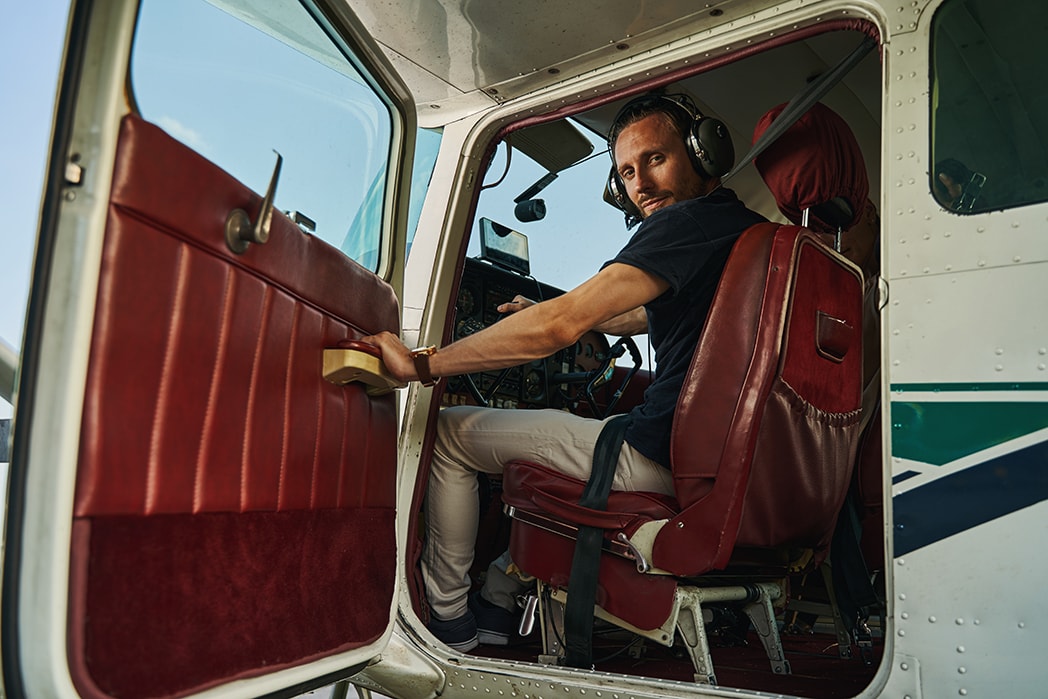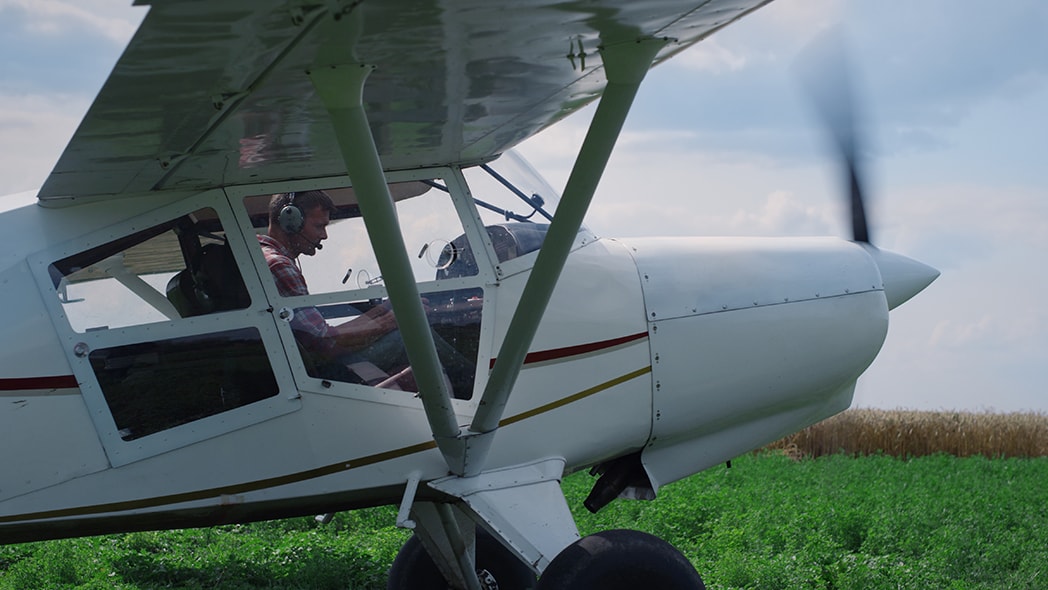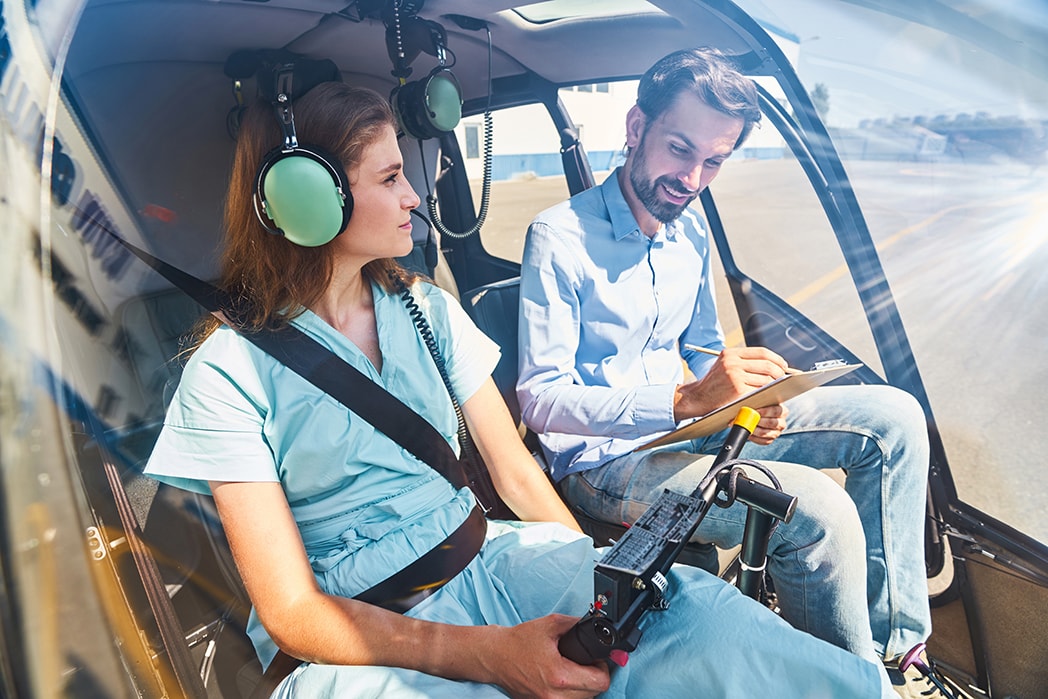How to Learn to Fly: Essential Steps for New Pilots
May 08, 2025
To learn to fly start with a Discovery Flight to feel the rush of flying. Enroll in flying lessons to get the training and get a student pilot certificate to fly solo. This guide will take you through each step from your first lesson to getting your private pilot certificate.
Key Takeaways
-
Flying is not just fun but also personal growth and lifelong memories through the journeys above the world.
-
Becoming a pilot is structured lessons that combines theory and practical training from a Discovery Flight to a Certificate.
-
Investing in flight training opens up career opportunities and requires commitment but the rewards of flying and professional development are endless.
Discover the Joy of Flying
Flying a small plane is a unique combination of excitement, complexity and reward. The sheer joy of flying and the views from up high is bliss like no other. For many people aviation is more than a hobby. It’s a sanctuary from the daily grind and gives you mental clarity and a new perspective on the sky and life below.
Think of the memories you could make at the controls. From touring historic landmarks to exploring new territory or just taking in the beauty of nature from above, flying gives you access to experiences others can only dream of. The moments you create in flight become lifelong keepsakes filled with stories only those who have tried this adventure can tell.
Start your aviation journey with a Discovery Flight. This initial adventure in a smaller plane gets you into the thrill of flying for yourself.
With various options these packages allow you to dip your toes into flying without committing to a full training program – and ignite the spark that could become a lifelong passion for flying above us all. Networking events are also a great way to meet like minded people who may be helpful down the line in your career!
Understanding Flying Lessons
Flight training is the foundation of a pilot’s education. These lessons combine theoretical ground school with actual flying time under the guidance of a certified flight instructor. This way you’ll get both practical skills to fly an aircraft and aeronautical knowledge.
You can learn to fly different types of aircraft such as single engine, multi engine, helicopters and gliders through these flying lessons.
For those specifically interested in recreational flying, a sport pilot license is an option, offering a simplified approach to flying. Throughout this journey, experienced instructors will be with you to help you build your skills and confidence in your chosen area.
Before you start these flying adventures, prospective students must meet the eligibility criteria for flight training: be at least 16 years old. Hold a current medical certificate. And be able to communicate in English although no prior experience in flying or aviation is required. Flying lessons are open to anyone who wants to get their pilot’s license.
Starting Your Pilot Journey

Getting started as a pilot begins with getting a student pilot certificate. To do that you need to meet certain requirements, such as pass a medical exam and get an FAA Student Pilot Certificate. This is required for any student to fly solo.
Your first flight lesson will be exciting and a little scary as you are in a completely new environment. In this lesson you will learn to taxi the aircraft, learn takeoff procedures and learn to control the instruments of the airplane. These basic skills are important because they are the foundation of all future aviation training and mark the beginning of flying.
As you continue to learn how to fly it becomes clear that it’s more than just technical skills. It’s personal growth and self discovery. With each step forward you gain more knowledge about how airplanes work and become more self sufficient.
The confidence you get from flying goes way beyond just flying the controls in the air – it’s huge personal accomplishments that reflect overall success.
Ground School Basics

Ground school is the theoretical foundation of flight training, preparing you for the practical part of flying. It covers a lot of topics so you have a solid understanding of aviation principles. Pilot training is both theoretical and practical so ground school is essential.
During ground school you’ll learn about flight operations, air traffic rules, communication procedures, meteorology and navigation. You’ll also gain an understanding of airport operations, including how aircraft move safely on the ground and how runways and taxiways are managed.
Important components are the four forces of flight, FAA rules and aeronautical decision making. This is critical for safe and effective flying and prepares you for in-air challenges.
Join the Briefing Room Squadron
Looking for extra support during ground school or just love aviation?
The Briefing Room Squadron offers expert-led online courses and aviation communities for:
-
Aspiring Licensed Pilots – Prepare with confidence for your FAA written exams.
-
Flight Simulator Aviators – Learn real-world concepts to level up your sim experience.
-
"Flight Nerd" Enthusiasts – Dive deep into aviation topics just for the love of flying.
🎯 Flight Nerd Air Force: Aviation Training
Flight Training Components
In flight training you transition from theoretical to practical. You’ll be with an instructor during flying sessions and get to apply what you learned in ground school. The early stages of these lessons will focus on standard takeoff procedures and getting a feel for the flight dynamics so you can get used to the aircraft controls and get familiar with the aircraft.
Your training will also include exercises that simulate emergency situations like engine failures and system failures so you can respond properly.
Pre-flight inspections are also part of your training regimen. It’s a critical part of your training to make sure the aircraft is thoroughly checked and cleared for departure. This kind of preparation prepares you for various challenges you’ll encounter in the air.
As part of this journey, flight instruction will be integral in helping you refine your skills and ensure you are confident in handling real-world flying scenarios.
Solo Flight Milestone
Becoming a pilot means reaching a big milestone: your first solo flight. To get to this point you need to build confidence and master the skills through lots of practice with a certified flight instructor who will make sure you are ready.
Your first solo flight is a big deal in aviation training. It’s a chance to reflect on how far you’ve come and all you’ve achieved so far. The feeling of achievement is huge and will get you even more excited for more flying adventures.
Earning Your Private Pilot Certificate
To get your private pilot certificate you must have at least 40 hours of flight training which includes 10 hours of solo flight and instruction from a certified instructor. This training must include cross country and instrument flying.
You must pass a written exam that tests your knowledge of aviation regulations, principles and techniques. The final step is the practical test or check ride where an authorized designated pilot examiner will test your practical flying skills and theoretical knowledge in actual flying conditions.
The cost of getting this certificate is between $15,000 to $20,000 due to training and testing expenses. Yes it’s a big investment but it’s worth it for the experiences and opportunities worldwide.
Advanced Training Options
Once you have your private pilot certificate you can further develop your flying skills by doing advanced flight training. An instrument rating allows you to fly in a variety of weather conditions which is a huge increase in versatility and safety. This requires additional training hours and a written exam and practical test.
If you want to fly bigger and more complex aircraft you will need a type rating. Pilots need to do ongoing training to keep up with the latest technology in aircraft systems and be prepared for various scenarios. Continuous learning is key to staying proficient and ready for whatever flying challenges come your way.
Choosing the Right Flight School

Choosing the right flight school is part of your journey in aviation. Look into the reputation of the flight school for the quality of training and customer service and their safety record and instructors credentials. By visiting the schools you have a chance to see the facilities, meet the instructors and perhaps do an introductory flight.
Make sure to ask how many students each instructor has and will you be working with the same instructor throughout your training. Understanding how a school’s curriculum works and how most students progress can make a big difference in your education.
For more information reach out to people who are currently enrolled or have graduated from that school for valuable insights.
Looking up online directories for flight schools can help you find good schools near you. Doing your research and asking the right questions will ensure you choose a flight training school that meets your personal and professional goals.
Cost and Time Commitment
Flight training is expensive because of the big costs of renting an aircraft and an instructor’s time. You can expect to pay between $100 and $200 per hour for lessons at a flight school, depending on the school and the aircraft.
However, there are options for inexpensive flight training that provide quality instruction at a more affordable rate. These programs can help reduce your overall expenses while still ensuring you receive comprehensive training.
On top of those hourly rates, you’ll need to budget an extra $500 to $1,000 for essentials like headsets and instructional materials. It’s important not just financially but also in terms of time management. You need to put in enough flight time and personal effort into your training.
Talking to other pilots and students, successfully fitting your flight training into your other life commitments like work or family is key to success in this field.
Maintaining and Advancing Skills

To maintain and advance flying skills you need to be in continuous professional development. This keeps your skills sharp and the safety environment alert and prepared. Higher level training like flight simulations gives you the opportunity to practice emergency responses in a safe environment and hone crisis management skills.
Keeping up to date with technology and modern flying methods is key. Being in continuous education and using simulation tools not only helps you as a pilot but prepares you for real life flying.
Career Opportunities in Aviation
Right now there are many career paths in aviation for pilots, including sport flying. With the global demand so high this is the perfect time to start an aviation career. Typical career paths include commercial airline transport pilot, corporate pilot, freight pilot, emergency medical services pilot, government service pilot, military aviator, test pilot and unmanned aerial vehicle operator.
Each role offers different opportunities and benefits that can be tailored to your personal goals in the industry. Ongoing training and progression not only improves your skills but also your marketability in the job market – which often leads to greater job satisfaction.
Frequently Asked Questions
What is a Discovery Flight?
A Discovery Flight is an exciting introductory experience where you can take the controls of a small aircraft and explore the thrill of flying.
It’s the perfect opportunity to see if becoming a pilot is right for you!
What are the eligibility requirements to start flying lessons?
You can begin flying lessons if you’re at least 16 years old, have a valid medical certificate, and can effectively communicate in English.
So get ready to spread your wings!
How much does it cost to obtain a Private Pilot Certificate?
A Private Pilot Certificate typically costs between $15,000 to $20,000 including training and exam fees.
Worth every cent!
What are the career opportunities in aviation?
Aviation has many career options such as commercial and cargo pilot, medical and military pilot, and drone pilot.
Dive in and see what you can do in this exciting field!
Why is continuous training important for pilots?
Recurrent training is important for pilots to stay current and prepared for any situation, to adapt to new technology and changing flying conditions.
Keep learning to level up your flying and safety!
